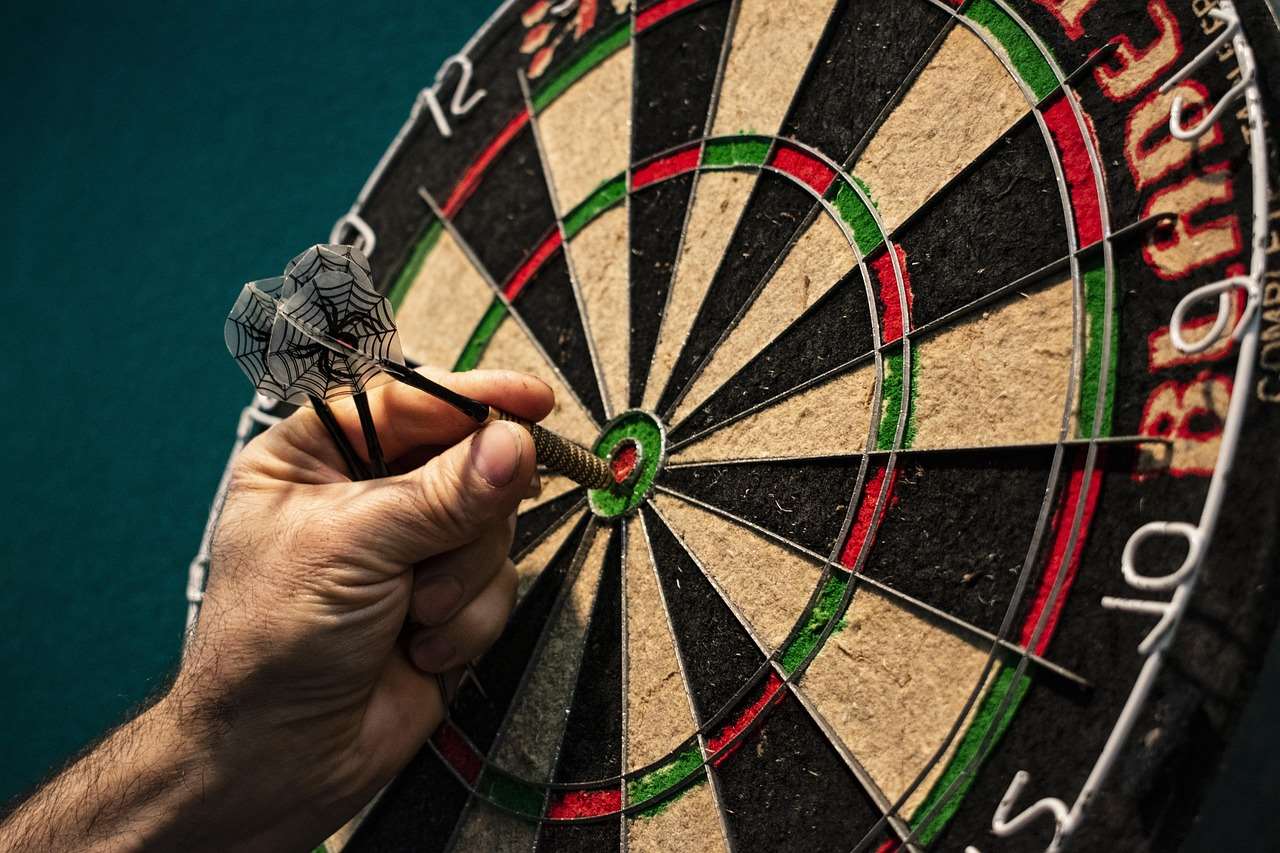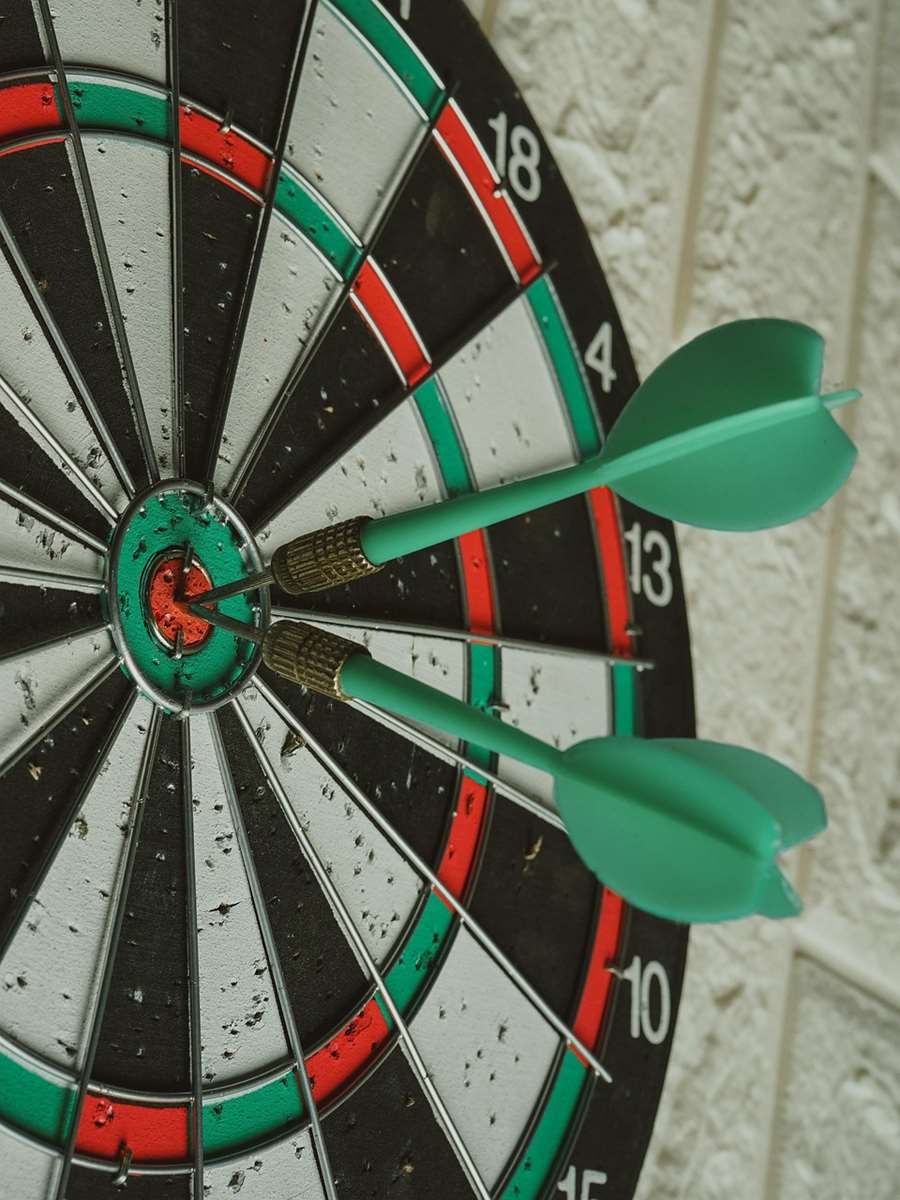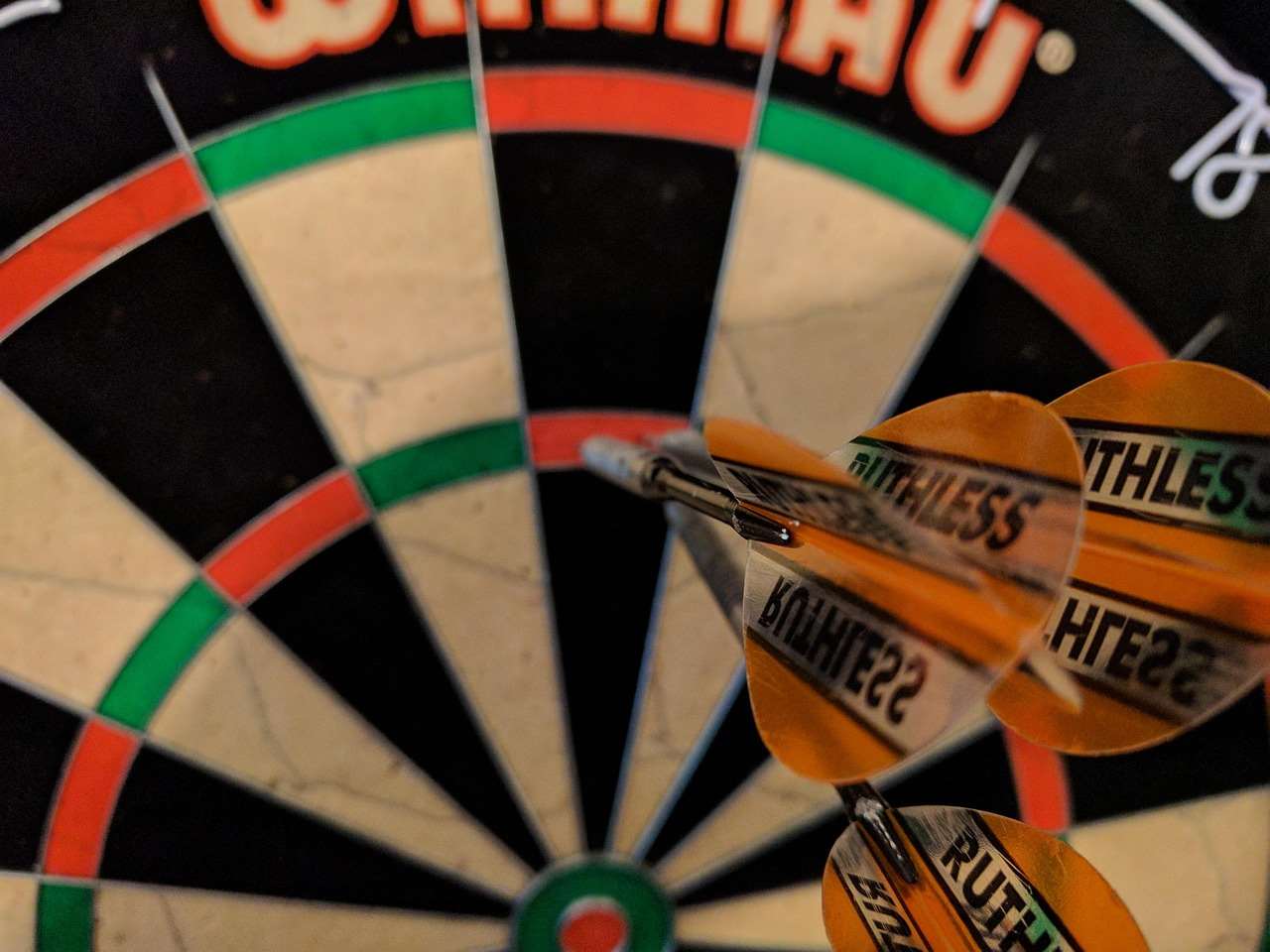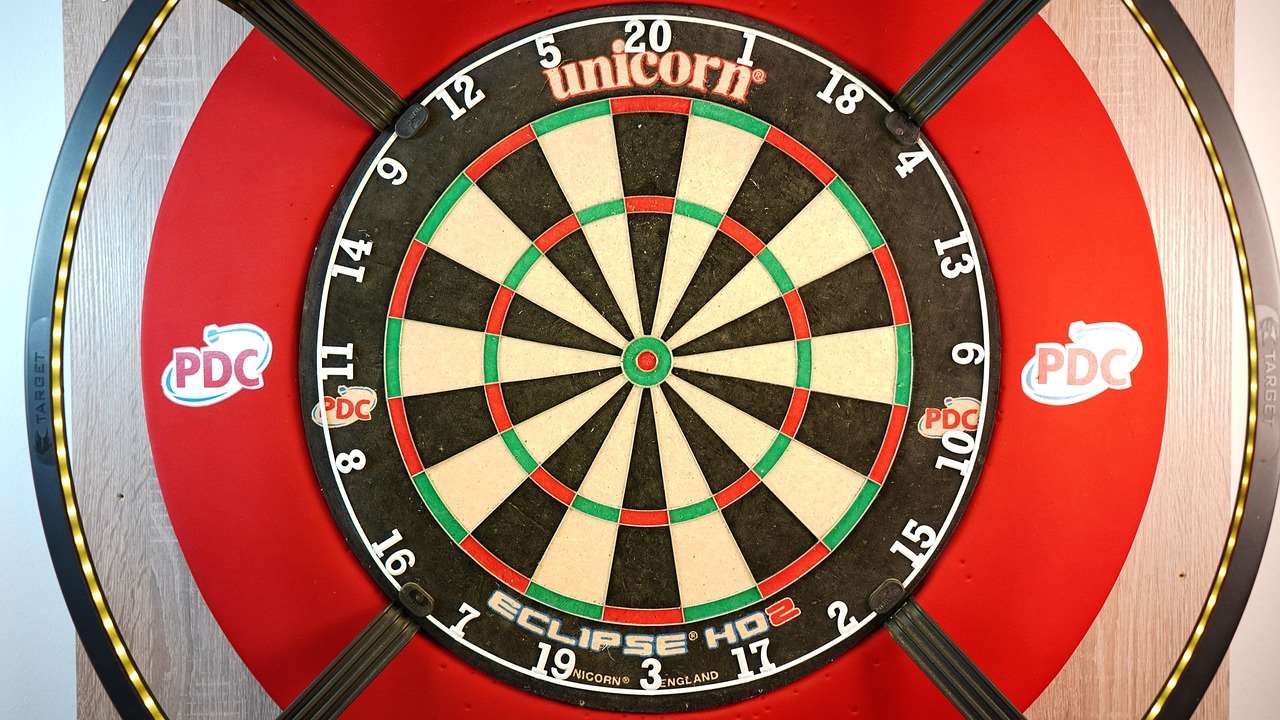The correct darts hoogte bull, or bullseye height, is 1.73 meters (68 inches) from the floor to the center of the bullseye; adhering to this standard is crucial for fair play and consistent practice. This article will explain the reasons behind this specific measurement, how to accurately measure and mount your dartboard, and other essential factors to consider for an optimal darts setup.
⚠️ Still Using Pen & Paper (or a Chalkboard)?! ⚠️
Step into the future! The Dart Counter App handles all the scoring, suggests checkouts, and tracks your stats automatically. It's easier than you think!
Try the Smart Dart Counter App FREE!Ready for an upgrade? Click above!
Understanding the Significance of the Correct Darts Hoogte Bull
Why is the darts hoogte bull so important? The standardized height ensures fair competition across all playing environments. Whether you’re playing casually with friends or competing in a professional tournament, knowing that everyone is aiming at the same target creates a level playing field. Imagine if basketball hoops were different heights in different gyms – it would fundamentally change the game! Similarly, a non-standard bullseye height can significantly impact your throwing technique and accuracy.
Beyond fairness, consistency in setup is vital for developing your dart game. Muscle memory plays a huge role in darts, and regularly practicing on a board with the correct darts hoogte bull helps you groove a repeatable throwing motion. Deviating from the standard height, even by a few inches, can disrupt your rhythm and hinder your progress. Plus, adhering to the proper setup will help you avoid unnecessary scoring disputes.

How to Accurately Measure and Mount Your Dartboard
Getting the darts hoogte bull correct requires careful measurement and a secure mounting process. Here’s a step-by-step guide:
- Gather your tools: You’ll need a tape measure, a pencil, a level, a drill, and the necessary hardware to mount your dartboard (usually included with the board).
- Measure the height: Using your tape measure, measure 1.73 meters (68 inches) from the floor. Mark this spot on the wall with your pencil. This is where the center of your bullseye should be.
- Locate the mounting bracket: Most dartboards come with a mounting bracket on the back. Determine the center point of the bracket and align it with the mark you made on the wall.
- Drill pilot holes: Using your drill, create pilot holes at the marked locations. This will make it easier to screw in the mounting hardware and prevent the wall from cracking.
- Mount the dartboard: Securely attach the dartboard to the wall using the appropriate screws or anchors. Ensure the board is level before fully tightening the hardware. Use a level to check.
- Double-check: After mounting, double-check the darts hoogte bull with your tape measure to ensure accuracy.
Pro Tip: Consider using a laser level for even greater precision when measuring the bullseye height.
Essential Considerations for Your Darts Setup
Beyond the darts hoogte bull, several other factors contribute to an optimal darts setup. Paying attention to these details can enhance your playing experience and improve your accuracy.
The Oche Distance
The oche, or throwing line, should be 2.37 meters (93.25 inches) from the face of the dartboard. This distance, combined with the correct darts hoogte bull, ensures the proper trajectory for your darts. Ensure your darts points system considers this too.
Lighting
Adequate lighting is crucial for clear visibility of the dartboard. Invest in a dedicated dartboard lighting system to eliminate shadows and ensure consistent illumination. Good lighting will also help reduce eye strain and improve your focus.
Surround Protection
Protect your walls from stray darts by installing a dartboard surround. These surrounds are typically made of rubber or cork and are designed to absorb the impact of errant throws. Not only will a surround save your walls, but it can also reduce bounce-outs.
Dartboard Material
The type of dartboard you choose can also affect your game. Bristle dartboards, made from sisal fibers, are the most common and durable option. They self-heal after being pierced by darts, ensuring a longer lifespan. Electronic dartboards are another option, but they are generally less durable and may not provide the same playing experience.

Troubleshooting Common Issues with Darts Heighte Bull
Even with careful measurement, you might encounter some issues when setting up your dartboard. Here are some common problems and how to solve them:
- Board not level: If your dartboard isn’t level, use shims or spacers behind the mounting bracket to adjust its position.
- Wall damage: If you’re mounting your dartboard on a weak wall, use drywall anchors to provide extra support.
- Inconsistent throws: If you’re experiencing inconsistent throws, double-check both the darts hoogte bull and the oche distance. A slight deviation in either measurement can significantly impact your accuracy. Consider upgrading your dart shaft entferner if you find yourself struggling with removing broken shafts frequently, as this could indicate poor dart construction contributing to inconsistent throws.
The Psychological Impact of a Proper Setup
While the physical aspects of the darts hoogte bull and setup are important, the psychological impact shouldn’t be overlooked. Knowing that your board is correctly positioned can boost your confidence and improve your mental game. When you’re not worried about whether the setup is fair or accurate, you can focus solely on your throws. Think of it like having a perfectly tuned instrument – it allows you to perform at your best without distractions.
Confidence is a key element of success in darts. A proper setup can help you approach each game with a positive mindset, knowing that you have the best possible conditions for success. In fact, a comfortable and consistent environment can be almost as important as selecting the right dart flights rude enough to psych out your opponents!

Darts Heighte Bull and Children: Adapting the Game
Introducing children to darts can be a fun and engaging activity. However, the standard darts hoogte bull may be too high for them to reach comfortably. In these cases, it’s perfectly acceptable to adjust the height and oche distance to accommodate their smaller stature.
A good rule of thumb is to lower the dartboard so that the bullseye is at eye level for the child. Similarly, shorten the oche distance so that they can throw comfortably without straining. Remember, the goal is to make the game enjoyable and accessible for them. As they grow, you can gradually increase the height and distance until they reach the standard measurements. Another option is to consider a what height dartboard for kids specifically designed for younger players.
Advanced Tips for Fine-Tuning Your Setup
Once you’ve mastered the basics, you can start fine-tuning your setup to optimize it for your individual needs. Here are a few advanced tips to consider:
- Experiment with different oche distances: While the standard distance is 2.37 meters, some players may find that a slightly shorter or longer distance suits their throwing style better.
- Adjust your lighting: Experiment with different lighting angles and intensities to find what works best for your eyes.
- Consider a raised oche: A raised oche can help maintain a consistent throwing stance, especially if you’re playing on a soft or uneven surface.

Maintaining Your Dartboard for Optimal Performance
Proper maintenance is essential for extending the life of your dartboard and ensuring consistent performance. Here are a few tips:
- Rotate your dartboard regularly: Rotating the dartboard helps to distribute wear evenly, preventing certain sections from becoming overly worn.
- Remove embedded darts: Remove embedded darts carefully to avoid damaging the sisal fibers. Use a dart removal tool if necessary.
- Clean your dartboard: Periodically clean your dartboard with a soft brush to remove dust and debris.
- Avoid moisture: Keep your dartboard away from moisture, as this can cause the sisal fibers to swell and warp.
The better you maintain your dartboard, the more consistent your practice will be, allowing you to truly master the correct technique for throwing at the proper darts hoogte bull.
Technological Aids for Darts: Scorekeeping Apps
While not directly related to the physical setup of your board, modern technology offers excellent aids for tracking your progress and improving your game. Darts scoreboard apps, like the app available at Darts scoreboard app, can automatically calculate scores, track your averages, and even provide insights into your performance. This can be invaluable for identifying areas where you need to improve and monitoring your progress over time.

Conclusion: Achieving Darts Success with the Right Setup
Ensuring the correct darts hoogte bull is more than just a formality; it’s a fundamental aspect of fair play and consistent practice. By following the steps outlined in this article, you can create an optimal darts setup that enhances your playing experience and improves your accuracy. Remember to pay attention to the oche distance, lighting, and surround protection, and don’t be afraid to fine-tune your setup to suit your individual needs.
With a properly set up dartboard and dedicated practice, you’ll be well on your way to achieving your darts goals. So, grab your darts, measure carefully, and start throwing! Do you have any questions or personal experiences with setting up your dartboard? Share them in the comments below! Now, go perfect your throw and aim for that bullseye!
Hi, I’m Dieter, and I created Dartcounter (Dartcounterapp.com). My motivation wasn’t being a darts expert – quite the opposite! When I first started playing, I loved the game but found keeping accurate scores and tracking stats difficult and distracting.
I figured I couldn’t be the only one struggling with this. So, I decided to build a solution: an easy-to-use application that everyone, no matter their experience level, could use to manage scoring effortlessly.
My goal for Dartcounter was simple: let the app handle the numbers – the scoring, the averages, the stats, even checkout suggestions – so players could focus purely on their throw and enjoying the game. It began as a way to solve my own beginner’s problem, and I’m thrilled it has grown into a helpful tool for the wider darts community.